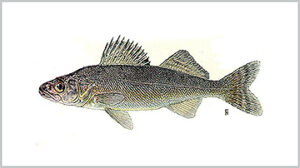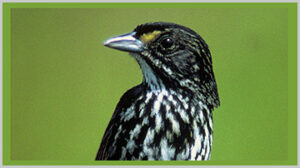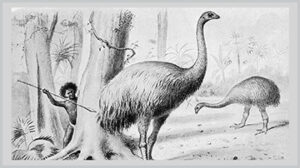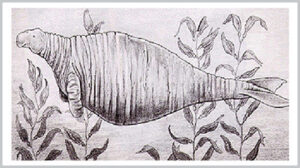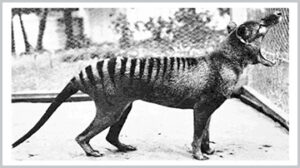Extinct Species
Extinction occurs when there are no more individuals of that species (plant or animal) alive anywhere in the world – the species has died out.
BLUE PIKE: The blue pike was an endemic fish of the Great Lakes region in the United States and Canada. Once commonly found in the waters of Lake Erie, Lake Ontario, and the Niagara River the blue pike preferred cool, clear and deep water in summer, and switching to (continue)
CARIBBEAN MONK SEAL: A sub-tropical marine mammal, the Caribbean monk seal was first recorded in modern scientific terms by Columbus in 1493 during his famous voyage to the Americas. The Caribbean monk seal had existed in the tropical waters of the (continue)
DODO BIRD: The dodo bird inhabited the island of Mauritius in the Indian Ocean, where it lived undisturbed for so long that it lost its need and ability to fly. It lived and nested on the ground and ate fruits that had fallen from trees. There were no mammals on the island and (continue)
DUSKY SEASIDE SPARROW: he dusky seaside sparrow became extinct in 1987. It is widely considered to be the most recent, well-documented extinction of a vertebrate in the United States. This black and white dusky seaside sparrow lived on the east coast of Florida and was (continue)
HEATH HEN The heath hen, a small wild fowl, was a relative of the prairie chicken. It was once considered quite tasty and was rather easy to kill. Prior to the American Revolution, the heath hen was found in the eastern United States from Maine to Virginia. But expanding (continue)
MOAS: A mere 1,000 years ago, giant flightless birds called moas inhabited the islands of New Zealand. There were more than a dozen species of moa and the largest of these may have weighed more than 200 kilograms and stood 2 to 3 meters high. The different species of moa (continue)
MONTEVERDE GOLDEN TOAD: The Monteverde golden toad is more glamorous and mysterious than it seems an amphibian could be. Its glamour is nature-made but its mysterious decline probably is due to humans. Golden toads have never been widespread, but they (continue)
NEANDERTHALS: Neanderthals were an early kind of human who lived in Europe and possibly west Asia from 120,000 years ago until 35,000 years ago. Neanderthals are often known by their burly stature and heavy brows. Unfortunately, they are also often portrayed (continue)
PASSENGER PIGEON: How could the passenger pigeon be extinct when it was the most abundant bird species on Earth no so long ago? It is almost impossible to imagine that the passenger pigeons’ population, which in the early 1800’s contained more individuals than all (continue)
PLEISTOCENE MEGAFAUNA: Fifteen thousand years ago giant animals roamed the North American continent. These extremely large animals, known as megafauna, included several species of elephant, such as the well known woolly mammoth, and sabertooth tigers which (continue)
STELLAR’S SEA COW: The Steller’s sea cow was the largest of the sirenians (a group of marine mammals that includes Manatees and dugongs). At one time it inhabited the Pacific Rim from Japan to California. Climate change and native hunting reduced its range to the Aleutian (continue)
TASMANIAN TIGER-WOLF: as Thylacinus cynocephalus a wolf or a tiger? It was neither. This remarkable animal looked like wolf with tiger stripes on its back and tail, but it was more closely related to kangaroos than to tigers or wolves. The Tasmanian tiger-wolf was a marsupial; (continue)
